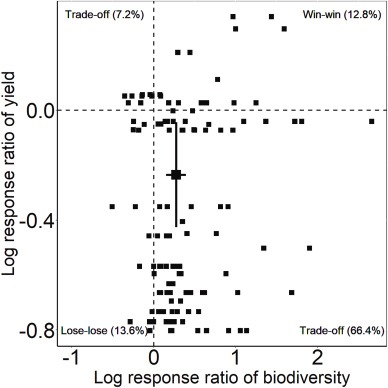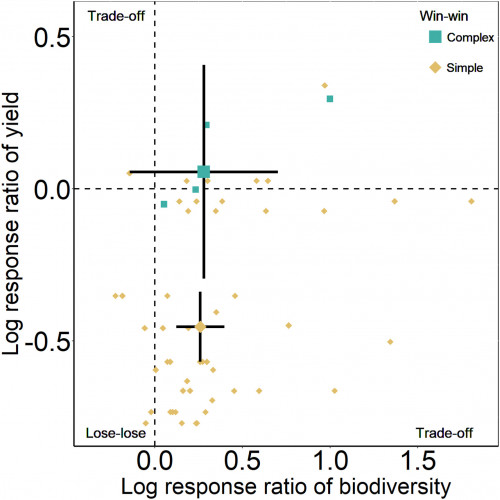A SHOWCASE-funded study, led by project partner institutions HUN-REN Centre for Ecological Research, Wageningen University, Agroscope, and Swedish University of Agricultural Sciences, was recently published in the Journal of Environmental Management. The study uses a meta-analysis to observe the simultaneous effects of agri-environment schemes (AES) on arthropods and yield on cropland.
Over the past decades, agricultural landscapes globally have experienced a decline in biodiversity, primarily due to intensified farming practices, agrochemical use, and habitat loss. In response, AESs have been implemented in Europe to mitigate environmental impacts since enhancing biodiversity through AES could benefit crop production through ecological intensification. Yet their effectiveness varies based on implementation and management measures.
While AESs have shown positive effects on arthropods in most cases, outcomes are variable, and the trade-off between biodiversity enhancement and reduced yield or increased expenses remains a key consideration for farmers. However, studies assessing both biodiversity and crop yield simultaneously are limited, leaving a gap in understanding potential trade-offs and win-win scenarios. This study addresses this gap by examining AES impacts on arthropod diversity and yield across European cropland systems, considering factors like functional groups, AES type, and landscape composition.

Figure 1: Scatter plot of log response ratio between biodiversity (pooled species richness and abundance data) and yield in agri-environment scheme vs. control fields on croplands showing mean effect sizes with 95% CIs.
The comprehensive model outcomes support the hypothesis that yield in AES fields is often lower in simple landscapes than in control fields with a 21% decline. In comparison, arthropod diversity was higher under AES compared to control fields with a notable 31% increase. This highlights the anticipated trade-off between conserving biodiversity and agricultural productivity. However, in complex landscapes, neither arthropod richness nor abundance differed significantly between AES and control fields, and yield remained unchanged. Out-of-production AESs, like grassy field margins and wildflower strips, contribute to enhancing biodiversity and promoting ecosystem services, although concerns about negative effects on crop yield may hinder farmer acceptance.
Read more of the study here.
Photo: Figure 4 from study - Scatter plot of log response ratio between biodiversity and yield in agri-environment scheme vs control fields on croplands. Presented are species richness mean effect size by landscape structure types (complex, simple) with 95 % CIS. Effects are significant if the CI lines do not cross zero lines. The points represent raw data values based on the landscape structure types.
